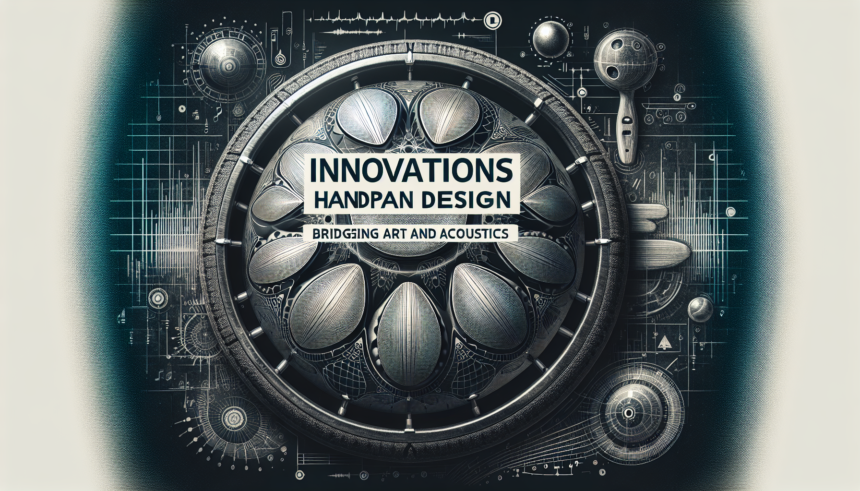Innovations in Handpan Design: Bridging Art and Acoustics
The handpan is an instrument that has captured the hearts and minds of musicians and listeners across the globe. Known for its ethereal sounds, the handpan transcends traditional music genres, creating healing and meditative experiences. The incredible popularity of this unique percussion instrument has spurred significant innovations in its design and manufacturing. This article will explore the latest advancements in handpan design and how these innovations are bridging the realms of art and acoustics.
The Evolution of Handpan Design
The modern handpan was born in the year 2000, when Felix Rohner and Sabina Schärer of PANArt in Switzerland created the Hang. The “Hang,” meaning “hand” in the Bernese German dialect, combined elements of Trinidadian steelpans with Indian ghatam and Thai gong elements. The instrument is crafted from two convex steel sheets, glued together to form a shape resembling a flying saucer.
Structuring the Surface: The first innovation involved artistic hand hammering (one of the hallmark characteristics of the Hang). These hammer marks are not only a visual signature but play a crucial role in shaping the acoustic properties of the instrument.
Fine-Tuning Tones: Initially, the tuning process was rudimentary and involved mechanical steps. As the community of handpan makers grew, more sophisticated methods were developed. Handpan designers now use electronic tuning devices to achieve precision tuning, ensuring the scale and tones have harmony and resonance.
Innovative Materials
The initial handpans were primarily made from nitrided steel. The nitriding process hardens the steel, improves its resilience, and adds resistance to rust. However, as the instrument gained popularity, innovators started experimenting with various materials for enhanced tonal quality and durability. Some notable innovations include:
Stainless Steel: Stainless steel handpans are notable for their bright, sustained tones and increased resistance to rust compared to nitrided steel.
Ember Steel: Ember steel is a specialized alloy known for its unique tonal qualities. Instruments made from Ember steel typically produce warmer, more mellow sounds.
Titanium: A newer entrant into the handpan material world, titanium is valued for its lightness and exceptional resilience. Titanium handpans offer a distinct clarity and bright presence, along with impressive sustain and overtone complexity.
Revolutionary Designs
Handpan makers have continually pushed the boundaries of traditional designs to explore new soundscapes and bridge art with acoustics. Here are some groundbreaking innovations:
Hybrid Handpans: These involve merging the handpan with other percussive or melodic elements. For instance, some creators have incorporated elements like tongues on the outer shells or additional resonating chambers to produce hybrid sounds that add richness to the music.
Variable Tuning Systems: Newer designs include mechanisms that allow musicians to alter the tuning of the notes. This level of customization gives musicians unprecedented flexibility in playing different scales or modifying their sounds on the fly.
Decorative Art: Art is an integral part of many handpan designs. Techniques such as engraving, painting, and inlaying are employed to transform these instruments into visually stunning art pieces. These intricate designs often have cultural or personal significance for the player, further deepening the connection between art and acoustics.
Advanced Acoustics
To better understand and improve the handpan’s acoustic properties, manufacturers are employing cutting-edge technologies like acoustical analysis and 3D modeling:
Acoustical Analysis: Tools such as spectrograms and frequency analyzers allow designers to visualize and quantify the instrument’s acoustical output. These insights are invaluable for tweaking the design to achieve specific tonal goals.
3D Modeling: The use of 3D CAD software permits creators to experiment with various geometries and shell thicknesses virtually, helping them predict how these changes will influence the instrument’s sound. This ability reduces material wastage and speeds up the design cycle significantly.
State-of-the-Art Manufacturing Techniques
Innovations in manufacturing have also played an essential role in advancing handpan design:
Laser Cutting: Laser cutting allows for precise shapes and patterns to be cut into the steel. This precision is crucial for consistent quality and the creation of intricate designs that would be difficult to achieve by hand.
Hydroforming: Some handpan makers are adopting hydroforming techniques, where water pressure is used to shape the metal. This process yields uniform, high-quality shells that are ideal for further tuning and customization.
Robotic Hammering: Though hand-hammering has its own unique charm and character, robotic hammering can offer unprecedented precision and consistency. Machines can carry out highly detailed and complex hammering patterns, ensuring each instrument has consistent quality while retaining its musical integrity.
Challenges and Future Trends
Despite these remarkable advancements, the field of handpan design continues to face several challenges:
Standardization: The handpan community is still working towards standardizing basic design elements. This lack of standardization can make it challenging for new players to navigate the market.
Cost: The innovative materials and advanced manufacturing techniques contribute to the high costs of quality handpans. Making these instruments more accessible without sacrificing quality remains an ongoing challenge.
Ethical Manufacturing: As demand increases, ethical considerations regarding labor practices and environmental sustainability have come to the forefront. Manufacturers strive to balance innovation with ethical practices in their production processes.
Looking Forward: Future trends point towards even more integration of technology in handpan design, including smart sensors that capture playing dynamics and provide real-time feedback. Furthermore, the push towards eco-friendly materials and sustainable manufacturing practices is anticipated to grow stronger.
Conclusion
Innovations in handpan design have significantly bridged the realms of art and acoustics, giving birth to instruments that are as visually captivating as they are sonically mesmerizing. From pioneering material usage to advanced acoustical analysis and manufacturing techniques, the evolution of the handpan continues to inspire both creators and musicians alike. While challenges remain, the future of handpan design looks promising, driven by a blend of tradition, technology, and ethical considerations. Whether you’re a player, maker, or an enthusiast, the continual evolution of this instrument offers endless possibilities for exploration and expression.
FAQs
1. What distinguishes a handpan from other percussion instruments?
The handpan is unique due to its harmonic and melodic capabilities. Unlike many percussion instruments that focus on rhythm, the handpan produces rich, resonant notes that can create a full musical scale.
2. What are the benefits of using different materials in handpan construction?
Different materials affect the tonal quality, durability, and resistance to rust. For example, stainless steel offers a bright, sustained tone, while titanium provides clarity and resilience.
3. How is technology shaping the future of handpan design?
Technological advancements such as 3D modeling, acoustical analysis, laser cutting, and robotic hammering are making it easier to experiment with new designs, improve precision, and ensure consistent quality.
4. Are handpans suitable for beginners?
Yes, handpans are suitable for beginners, though they can be costly. Many beginners find the instrument intuitive and rewarding to play, but it’s important to purchase from reputable makers to ensure quality.
5. What are the key challenges in the handpan industry?
Challenges include standardizing design elements, reducing costs while maintaining quality, and ensuring ethical manufacturing practices. Addressing these will help the industry grow sustainably.





